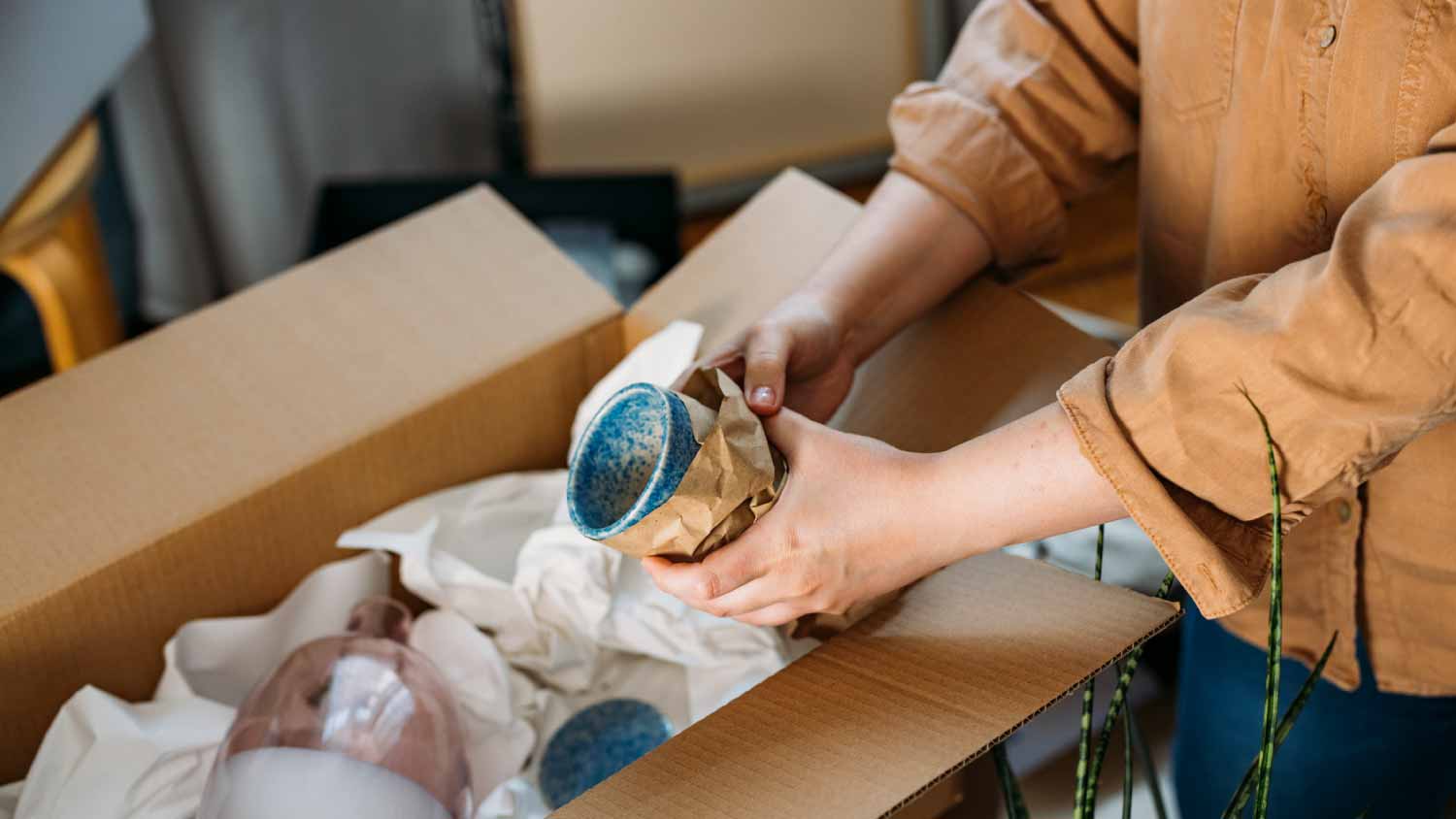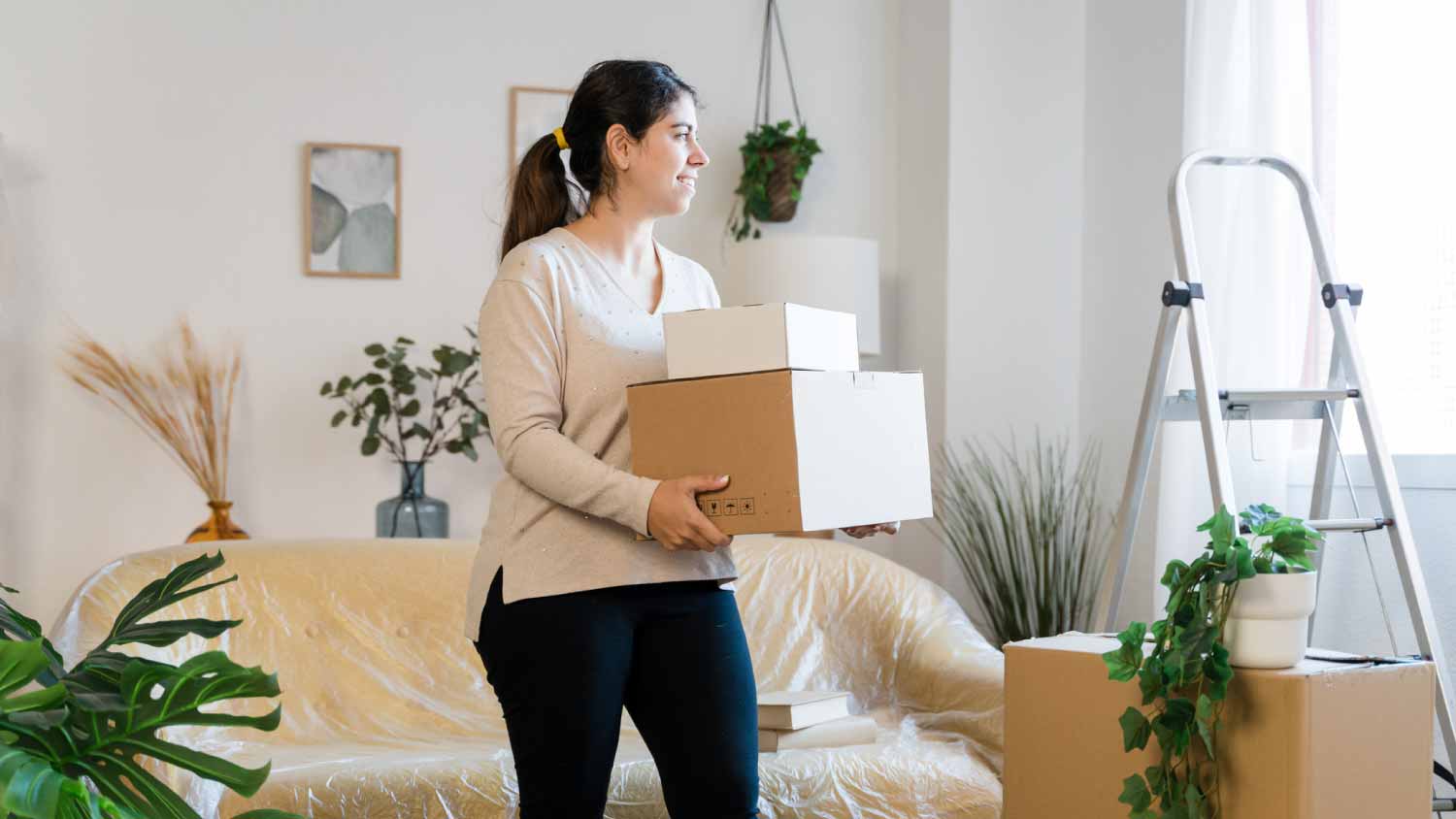
If you’ve ever tried moving a pool table, you know it’s a big undertaking. Here’s an overview of what factors into the cost to move a pool table.
Take your packing skills to another level for the biggest moves in your life


Moving to a new home is a major project, and learning how to pack boxes for moving is an essential step in the process. For example, you’ve probably grabbed free paper boxes from where you can get them (we have a guide on tracking down moving boxes for these occasions). But with the big moving day approaching quickly, it’s time to pack everything properly. Here’s how to pack boxes for moving to help save time, prevent damage, help out your professional movers, and give your back a break.

Moving boxes can be fragile, so it’s best to add a layer of protection to the inside of the box before you start filling them up. That’s why it’s important to check moving supplies off of your to-buy checklist. If you have packing peanuts, sprinkle a layer on the bottom. If you’re using bubble wrap or foam wrap, place a layer on the inside that runs up the sides—that also works for towels and blankets.
It’s tempting to categorize your box by certain types of belongings, but that’s not always efficient. Instead, go room by room. For each room, focus on grouping objects by general size and weight. Ideally, you’ll want to create a section of “heavy” boxes and a section of “lighter” boxes when you’re finished. That makes them very easy to sort and stack when your moving day comes around.

Certain belongings should be wrapped individually—but what exactly? Set packing materials aside to individually wrap fragile items like:
Glassware
Durable electronics like A/V receivers, speakers, and clocks
Candles
Picture frames
Fragile decor pieces
While packing may feel like a game of Tetris, you’re still likely to end up with empty spaces inside as you fill boxes up. Those spaces are bad news. They make it more likely for boxes to crumple and create room for belongings to jostle around and damage each other. So when you fill your box up nearly to the top, remember to fill up spaces as much as possible.
You have several options for filler materials. You can use packing materials like foam, but it may get expensive depending on how many moving boxes you have. You can sacrifice towels and old clothes for the job, but they may get damaged in transit. Old standbys like crumpled newspaper and magazine pages aren’t as easy to find in our digital age, but still provide an affordable alternative.
If you want eco-friendly packing materials, you have lots of options. Foam and wraps come in recycled or biodegradable forms, and don’t usually cost more. You can often distinguish them by their bright colors.

The perfect box weight is what you can safely lift and stack. But for general safety and structural integrity, don’t pack a box that weighs more than 30 pounds—about the weight of an average beagle or young toddler. Always use boxes that have handle openings for easier manipulation. When stacking, always place the heaviest boxes on the bottom and the lightest boxes on top: Now is also a good time to keep in mind lessons on moving floor protection, as pushing too-heavy boxes across the floor can damage it.
With that 30-pound weight limit, what do you do with very heavy items like books and files? You don’t want to pack a half-empty box if you can avoid it. One method is to get several different sizes of moving boxes, some smaller than the others for heavier objects. Ordering different sizes is simple through moving websites or online stores, but you may not be able to be choosy if you’re getting free moving boxes from friends or local stores.
As you move through drawers and cupboards, it’s inevitable that you’ll find small collections of odds and ends, like adapters, batteries, hair clips, bottles of sunscreen, crafting supplies, and more. We recommend buying a fresh box of resealable, gallon-size baggies for these occasions. Group up similar objects and divide them into baggies before packing them into moving boxes. This step will make unpacking much easier and prevent any unintentional spillage.
Along with managing empty spaces and adding box liners, don’t forget to watch how much you fill each box. Overfilling can be a serious problem: Avoid packing objects too close to the top of the box, even if weight isn’t an issue. Nothing should peek over the top of the box or interfere in any way with fitting the lid on top. That’s also true if you’re renting crates for packing, since you’ll still be stacking these crates on top of each other. Keep everything about an inch below the top edge of the box for the best results.

Once your box is filled and the lid is on top, it’s time to label it. Use a market to label the side of the box, not the top (you’ll be stacking them, after all). Use large, bold lettering so it’s easy to read at a glance. Indicate both the room that the box came from and exactly what’s inside. Add other details if necessary, such as its contents. Some homeowners like to mark multiple sides of a box so it doesn’t need to face a particular side to be readable
Taping is very important for heavier boxes and longer moves. Taping helps secure the box and greatly reduces the chances that it will collapse or that the bottom will fall out when people are carrying it.
To begin, use packing tape on the bottom of the box and tape in an “H” pattern. One strip should go down the middle and protect the most vulnerable seam (run the tape a few inches over the sides for extra support). The other two strips should go on either end, securing the edges for transport.
If your boxes have a secure lid, you may not need to tape the top. If you are using boxes without a lid at all, tape the top as well, using at least one strip to properly secure it.
Our tips work great for the average moving box that you can pack with nearly anything. But some belongings don't fit well in the average moving box, including hanging clothes or TVs. Luckily, there are customized boxes for packing TVs, paintings, décor, and more. If you have lots of these belongings, you may want to consider hiring professional movers near you to pack them correctly and transport them safely to your new home.
From average costs to expert advice, get all the answers you need to get your job done.

If you’ve ever tried moving a pool table, you know it’s a big undertaking. Here’s an overview of what factors into the cost to move a pool table.

The cost to move a 4-bedroom house depends on home size, distance, and whether you hire movers. Learn the necessary costs before moving long distance.

Planning and budgeting for an office move? Find out the average office moving costs, from moving office equipment to IT expenses.

It pays to mind your moving manners when hiring professional movers. Here are some moving etiquette tips to make moving day easier.

If you’re concerned about damaging your computer during your move, you’re not alone. Ease your mind with these six computer-packing tips to ensure a safe move.

Packing dishes is often an overlooked part of the moving process. Learn how to pack dishes for moving in a safe and strategic way with this DIY guide.